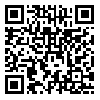Introduction: Blind and deaf individuals, due to their physical disability, may encounter more problems in regard with oral and dental care. The present study aimed to compare DMFT index mean within blind and deaf students in comparison with the healthy students.
Methods: In this descriptive cross-sectional study, 44 blind and 88 deaf students aged between 6-18 were selected via the census method. Moreover, 134 healthy subjects were randomly selected as the study controls. Permanent teeth examination was accomplished using natural light, catheter, and disposable mirror. DMFT index was utilized to assess the participants’ dental status. The study data were analyzed using SPSS software (ver, 16) via ANOVA and LSD tests.
Results: The mean DMFT within blind, deaf and healthy students was reported as 1.73 ±2.11, 2.86 ± 2.74 and 1.06±1.31 respectively. A significant difference was observed in DMFT index between healthy students with the blind (P-value=0.047) as well as deaf (P-value=0.000) students. In addition, a significant difference was detected between the blind and deaf students (P-value= 0.011).
Conclusion: Based on the results of this study, higher values of DMFT index mean was observed in the blind and deaf individuals compared to the controls. Therefore, promotion of oral and dental care through a proper education seems to be essential within these individuals.
Received: 2017/01/31 | Accepted: 2017/01/31 | Published: 2017/01/31
| Rights and permissions | |
 |
This work is licensed under a Creative Commons Attribution-NonCommercial 4.0 International License. |


